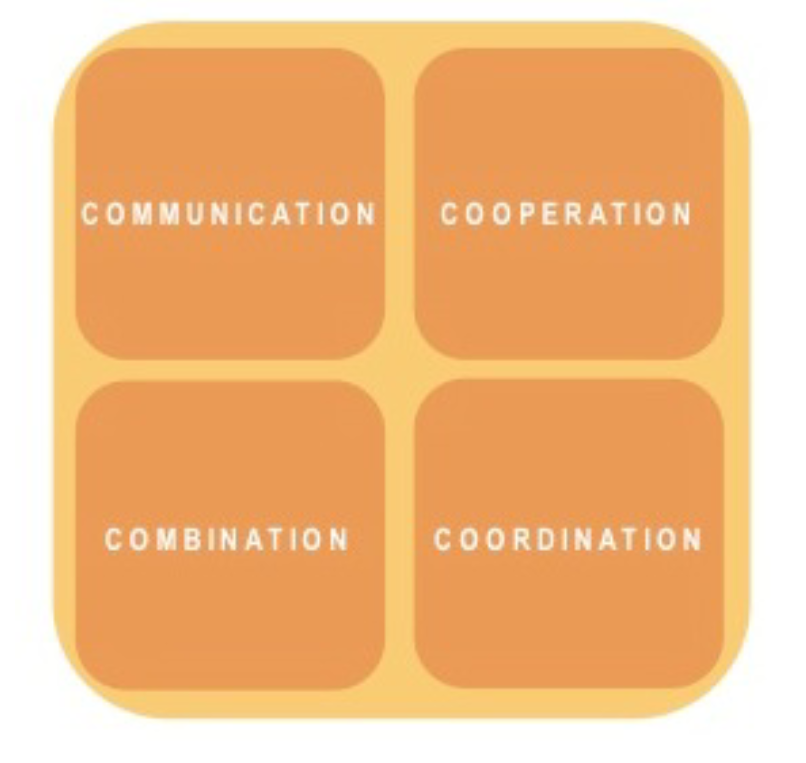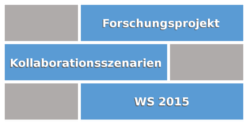The Model describes the Implementation of Enterprise 2.0 in terms of
-
The business activities that are being supported
-
The collaborative tools that are being implemented in the technology solution

This description is divided in four areas: Communication, Cooperation, Coordination and Combination. The original 3C-model refers merely to Communication, Cooperation and Coordination. In projects of Enterprise 2.0 is an additional focus on the creation and use of digital contents. These are mostly generated in Wikis and Blogs. To support the use and managing of digitalcontents, the 3C-model is extended by the element "Coordination". In the following, the four elements of the model are explained:
Communication
In this content Communication is described as people exchanging messages. Skyping, posting or blogging are mentioned as tools to communicate. The element “Communication” encloses alltools which are able to support different kinds of the communication.
Cooperation
This element refers to the obligation of two or more people to compile a common aim. Thereby, it is focused on the tools which can be used for a successful cooperation, for example, a common text or to edit a report. It is possible to make a distinction between Cooperation and Collaboration. In a Collaboration, people do not stick together and merely pursue common parts of an aim.
Coordination
Coordination refers to the function and activities which support the work routines, duties or events in the enterprise. This can be supported with resources like conference rooms or available documents.
Combination
This element focuses on the methods, tools, functions and activities which simplify the organisation of digital information (for example: Blogs, Emails, Tweets). This contains the simplification of searching processes as well as the integration and use of digital contents.
References
Williams, S.P., 2011. Das 8C-Modell für kollaborative Technologien. In M. Koch & P. Schubert, eds. Wettbewerbsfaktor Business Software. München: Hanser, pp. 11–21


